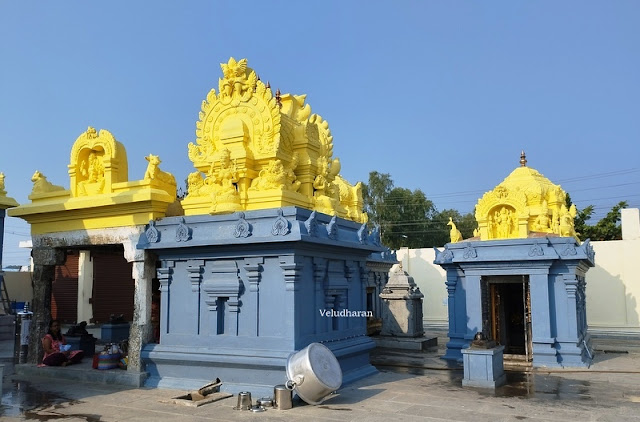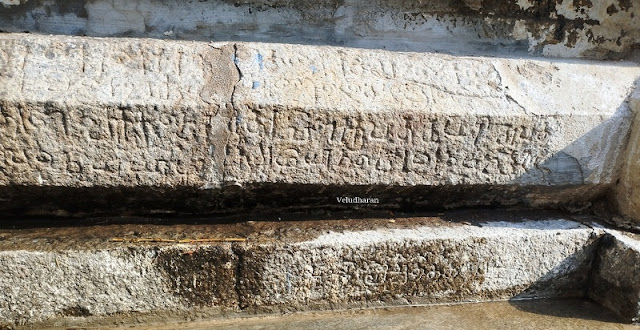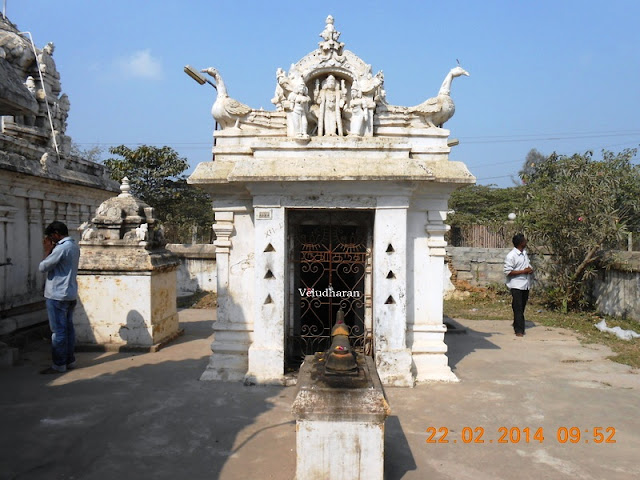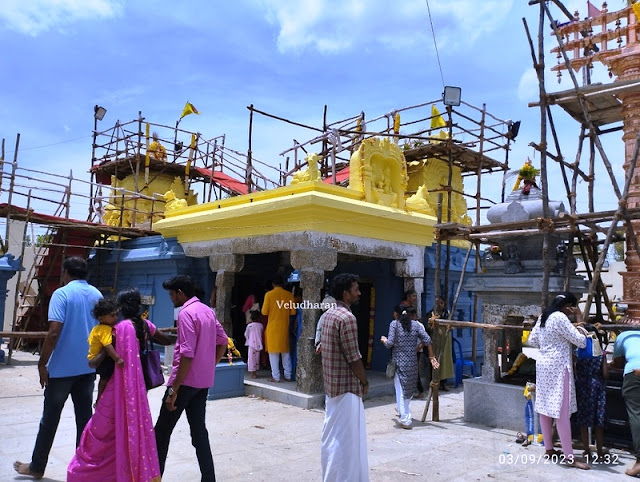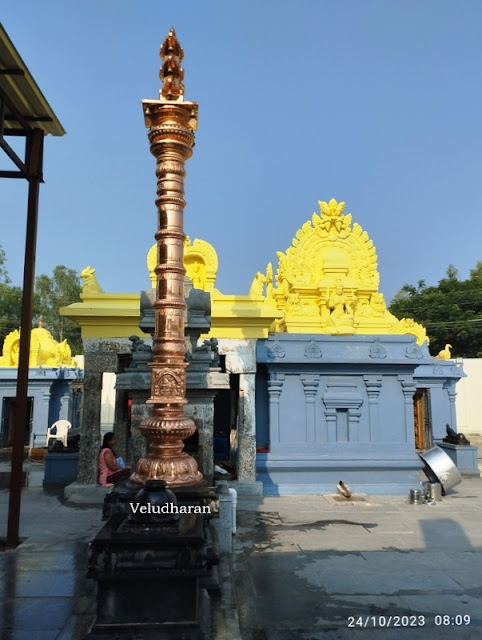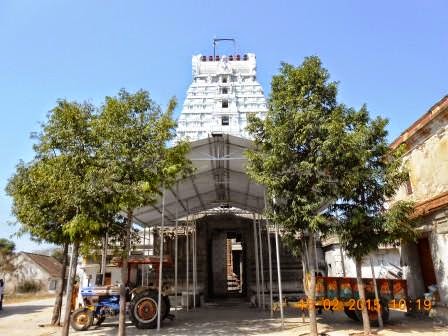This
post was updated with History and Inscriptions, Photographs on Maha Kumbhabhishekam day, and after the removal of scaffoldings
erected for Kumbhabhishekam.
24 February 2015
On the 21st February 2015, I visited the less-known Shiva Temple at Mambakkam. Originally my plan was to
have the darshan of Sri Anjaneyar at Pudupakkam. Since Mambakkam is at the
junction of the Kelambakkam to Vandalur road. The Shiva Temple is at the beginning
of the Village and Gurukkal is living nearby in a typical Agraharam house. The
temple is on the road curve and poses the danger of demolition when the road is
expanded. The details of the temple are as follows.
SRI MURUGA NATHEESWARAR TEMPLE, MAMBAKKAM.
Moolavar
: Sri Muruganatheswarar
Consort
: Sri Deivanayaki.
Some of
the important features of this temple are...
The
temple faces east, with a temple tank on the east side. Balipeedam and
Rishabam are on the east side. The entrance arch with stucco images of Lord
Shiva & Parvati in Rishabaroodar is on the south side. In
Koshtam Dakshinamurthy (in Vinayagar’s place) and Durgai.
In
praharam, Sri Vinayagar, Sri Valli Devasena Sametha Sri Subramaniar, Navagrahas,
Anjaneyar, and Chandikeswarar. Ambal is facing south in a standing posture with
abhaya and varada hastam.
HISTORY & INSCRIPTION
As per the inscription this place was called Jayamgonda
Chozhamandalathu, Puliyur Kottathu Kalvoy Nattu Mambakkam alias Murugesvaram.
Shiva was called Murugesar.
Rajaraja Chola I’s 26th reign year (1011 CE) inscription starts
with his Meikeerthi records the endowment of burning a perpetual lamp at Murugesvarattalvar, for which 90 Sheep were gifted by a certain Murugan Kaliyan of Mambakkam in
Kalvoy-nadu, a subdivision of Puliyurk-Kottam. The Village sabha had agreed to supply Ulakku ghee/oil. Some stones are missing and
misplaced, and the rest of the portions are severely damaged. (ARE 923 No 413, 1944 -45 No 19).
முதலாம் இராஜராஜனுடைய இருபத்தாறாவது ஆட்சியாண்டுக் கல்வெட்டு இது. அவனுடைய மெய்க் கீர்த்தியுடன் தொடங்குகிறது. புலியூர்க் கோட்டத்துக் கால்வாய் நாட்டு மாம்பாக்கத்துக் கோயிலுக்கு முருகன் (காலையன்) என்பவன் விளக்கு எரிக்க 90 ஆடுகளைக் கொடுத்ததாகத் தெரிகிறது. கிராமத்தார் அதைப்பெற்றுக்கொண்டு உழக்கு நெய் தினம்தோறும் கோயிலுக்கு அளிப்பதாக உறுதி கூறினர்.
Ref
1. Kanchipuram Mavatta kalvettukal Volume - 2
2. Tholliyal nokkil kanchipuram mavattam.
NOTE
We found there are controversies on the name of the temple and the name of the main Deity in the Kanchipuram Mavatta Kalvettukal Volume - 2 published by the Tamilnadu Archaeological Department. In the English version, Shiva's name is written as Murugesvarattalvar, and the donor's name is Murugan (Kalaiyan). These two are not mentioned in the inscription text. But in the Text, it is written as Murugan Koil - முருக(ன்) கோயில், which means that Shiva's name is Murugan. Experts may comment on this controversy.
To carry out Maha Kumbhabhishekam, Palalayam was conducted on 04th August 2022, and Maha Kumbhabhishekam was conducted on 03rd September 2023.
HOW TO
REACH :
Mambakkam is on the
way to Kelambakkam to Vandalur main road.
The temple is on the
Mambakkam to Medavakkam road. At the beginning of the Village from
Medavakkam.
CONTACT DETAILS :
Gurukkal and Trustee may be contacted on their mobile number +919884581931 and +919994675988.
LOCATION OF THE TEMPLE: CLICK
HERE
Moolavar Vimanam with Ambal Sannidhi's entrance
Vinayagar sannidhi
Ambal Gopuram on the left and Sri Subramaniar
Sannadhi
The damaged portion of Sri Subramaniar Sannadhi
Navagrahas
A stucco relief on the Vinayagar sannidhi wall
Kumbhabhishekam on 3rd September 2023
The paintings on the adhistanam were removed for inscriptions to be
visible
Photographs taken after Kumbhabhishekam
The old post of Sri Veera Anjaneyar
Temple, Pudupakkam, and Sri Pasupatheeswarar
Temple at Velichi was separated from this post and written as
a separate post. For updated post details, please click the respective links.
--- OM SHIVAYA NAMA ---
